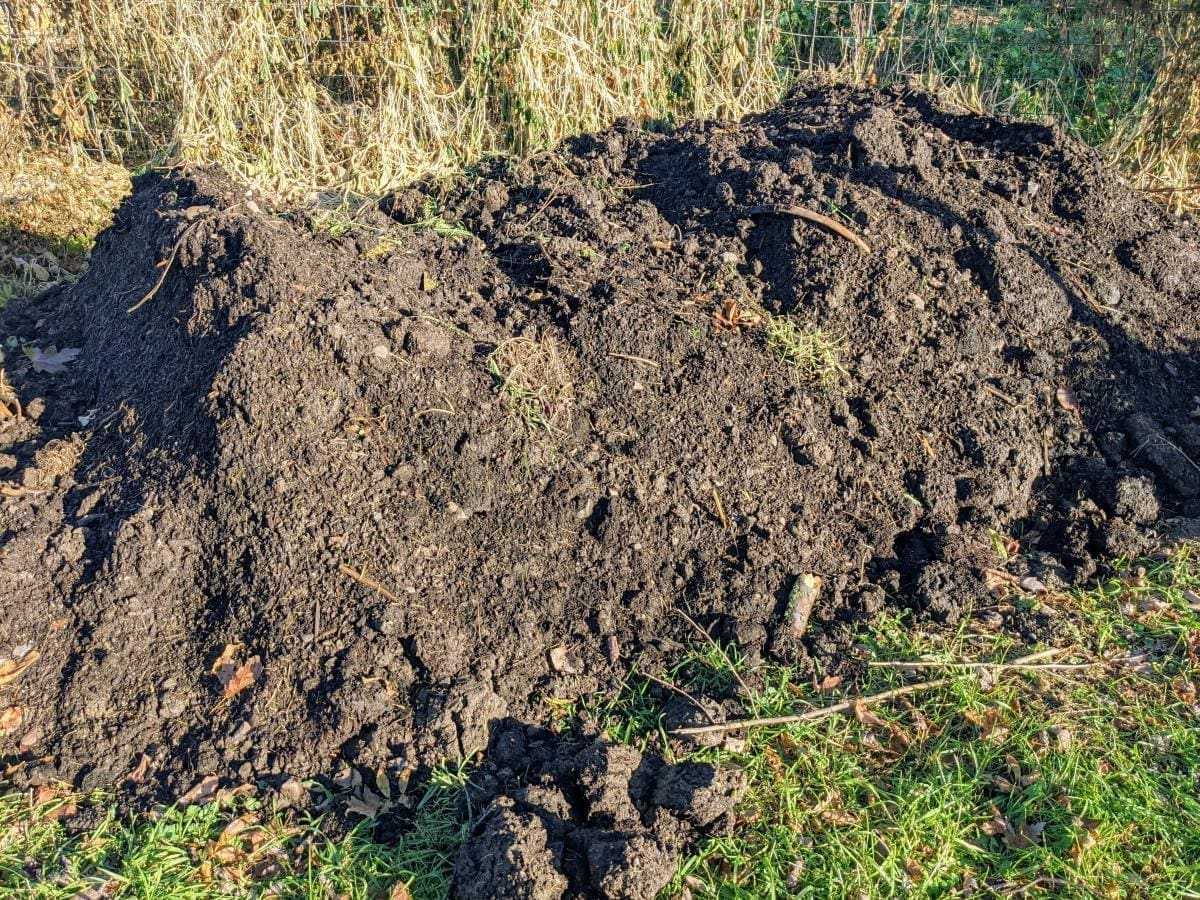This week we walked the pastures with a soil probe and a bucket, collecting core samples. On our farm all the soils are similarly composed of clay and silt, but there are variations between the fields. Soil sampling will allow us to understand how our farm management is affecting different soil profiles. We know that our least fertile soils are at the rear of the farm. With the test data in hand, we might be able to figure out if adding crushed limestone or chicken manure might be effective in bringing these areas into a more productive state.
Transcript
Today I’m out with the pasture soil probe. I borrowed this from some friends. We’ll be doing some soil testing
It’s just a stainless steel cylinder. It’s got a tapered end here. We stomp using this tread here, stomp the whole thing right into the ground, and we can extract a core sample of the soil. Now the top is going to contain some of the plants and the roots so we’ll chop that off and we’ll take the center core of the soil. What I’m going to do is I’m going to get about 15 plugs from various spots in the same general soil area. And then we’ll mix them together and send that to the lab for testing.
So the purpose of soil testing is to find out what’s in the soil: what minerals, what pH, what amount of organic matter. It helps us to understand what’s happening as we manage the farm, how the soils are developing. Soils tell us a lot about what’s happening in them by what’s happening on top of them. Obviously, the plants that are growing, even the palatability of the plants to the animals, are affected by the soil. We can actually improve the grass composition. We can improve the soil composition. We can do work that enhances the water cycle. And as we do each of these things we should see some compounding effects. So we’re excited to see the results that this soil test gives us from this year.
While we were at it, we also collected samples from a few different spots in the garden and tested our compost.

All of this compost will end up in the vegetable garden. The rest of the pile will be spread on the pastures.
I’ll follow up on this when I get the results of all the testing to share what I’ve learned.
